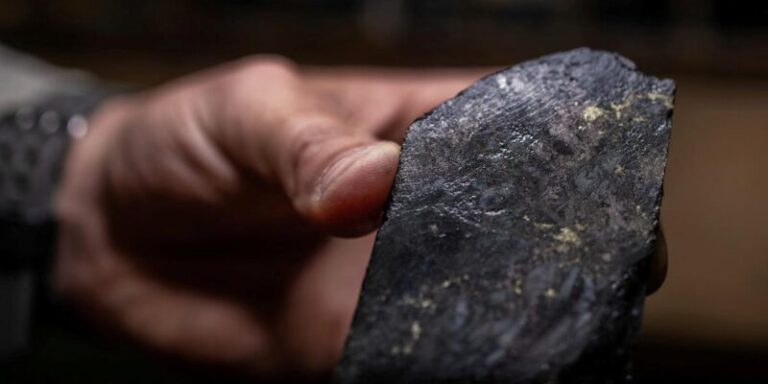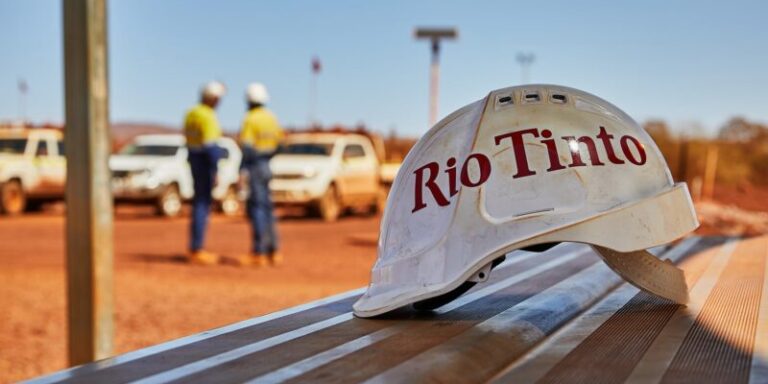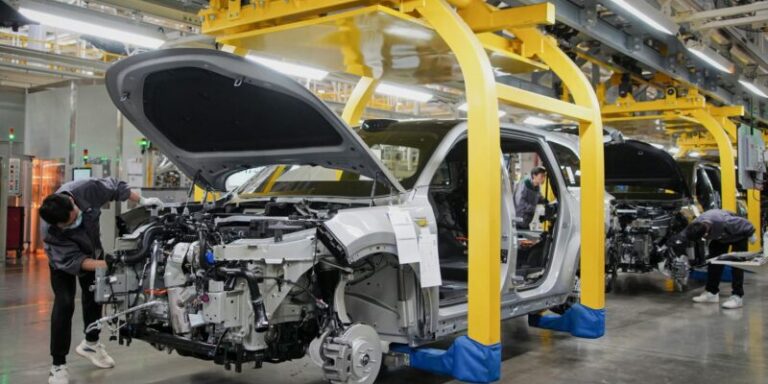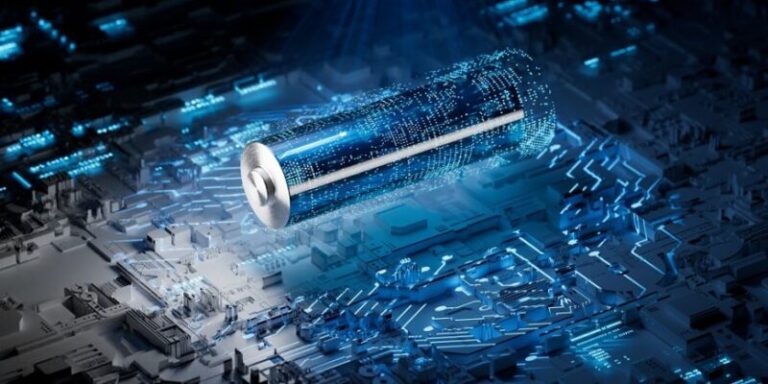
One of the most prominent criticisms surrounding electric vehicle (EV) use is gradually losing its power, thanks to the adoption of a simple yet practical concept: battery swapping.
For decades, power tool users have been employing this technique, based on the premise of replacing a depleted battery with a fully charged one to avoid time wasted waiting for charging.
This innovative solution addresses the concerns of EV owners regarding charging time.
Khaled Hassounah, the founder of Ample, explained the concept to Forbes, stating, “The idea is that when you run out of charge, you just stop somewhere for five minutes and you drive off with 100% charge.” Ample, which currently operates 12 swapping stations in California, has plans for expansion.
The Ample charging stations resemble carwash garages, where EVs can pull in, and an automated process swiftly replaces the battery in under five minutes.
Moreover, these stations harness wind and solar power whenever possible, effectively converting natural resources into power for EVs.
Hassounah further emphasized, “[W]e do it at a cost that’s cheaper than gas, so we already today can be 20% cheaper than gas, while giving you a gas station-like experience with a fully electric solution.”
Forbes reported that Ample follows a subscription model, allowing riders to purchase the required amount of charge for their upcoming drives.
Although this isn’t the first attempt at a battery-swapping business, as exemplified by the bankruptcy of Better Place about a decade ago, the idea has gained renewed momentum in the western regions, particularly with its popularity among the rideshare industry.
In a piece cited by Forbes, Seth Smith, Uber’s public policy manager, mentioned a new state standard in California that aims to have 90% of vehicle miles traveled by rideshare fleets in zero-emission vehicles by 2030, with interim targets commencing in 2023. This state regulation is expected to bolster the demand for battery-swapping solutions.
Ample’s CEO, Hassounah, revealed in an interview with Forbes that the company has integrated its technology with seven EV makers.
Remarkably, due to its battery pack’s unique design, Ample claims that their solution can be seamlessly added to any EV platform without requiring modification.
Fisker, an emerging EV manufacturer, is partnering with Ample to popularize this technology. According to TheStreet, the two companies are collaborating to incorporate battery-swapping capability into the 2024 Fisker Ocean.
Earlier this year, the Fisker Ocean gained attention for its roof-mounted solar panels, which purportedly add 1,500 miles of driving range annually.
This collaboration between Ample and Fisker aims to target drivers who travel extensively and have yet to embrace EVs.
Furthermore, as the EV market continues to expand, the reusability of batteries becomes crucial. The Guardian reported that approximately 12 million tons of lithium-ion batteries are projected to reach the end of their lifespan by 2030.
In this context, companies like Ample and Fisker, along with others embracing pack-swapping technology, offer a promising avenue to enhance EV accessibility while maximizing battery utilization.
Hassounah expressed confidence in Ample’s approach, stating, “We’ve built our technology in a way that allows us to make the stations very, very inexpensive, so we can deploy them quickly,” underscoring their commitment to rapid and cost-effective implementation.







